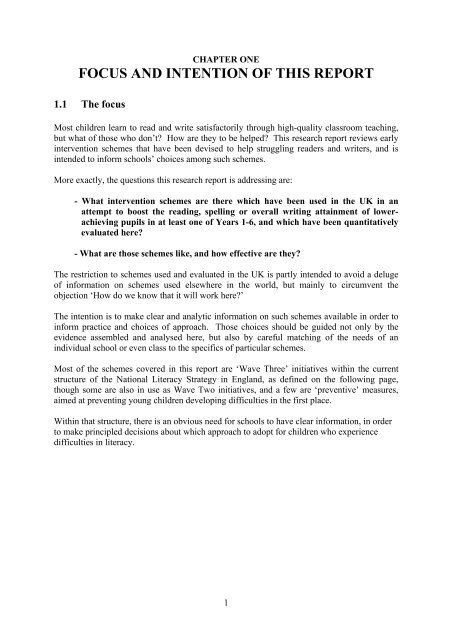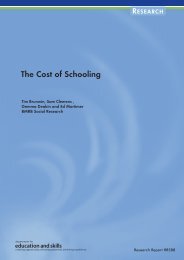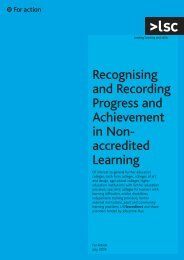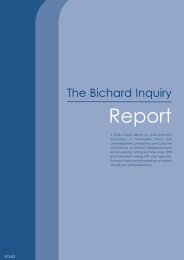What Works for Children with Literacy Difficulties? - Digital ...
What Works for Children with Literacy Difficulties? - Digital ...
What Works for Children with Literacy Difficulties? - Digital ...
Create successful ePaper yourself
Turn your PDF publications into a flip-book with our unique Google optimized e-Paper software.
CHAPTER ONE<br />
FOCUS AND INTENTION OF THIS REPORT<br />
1.1 The focus<br />
Most children learn to read and write satisfactorily through high-quality classroom teaching,<br />
but what of those who don’t? How are they to be helped? This research report reviews early<br />
intervention schemes that have been devised to help struggling readers and writers, and is<br />
intended to in<strong>for</strong>m schools’ choices among such schemes.<br />
More exactly, the questions this research report is addressing are:<br />
- <strong>What</strong> intervention schemes are there which have been used in the UK in an<br />
attempt to boost the reading, spelling or overall writing attainment of lowerachieving<br />
pupils in at least one of Years 1-6, and which have been quantitatively<br />
evaluated here?<br />
- <strong>What</strong> are those schemes like, and how effective are they?<br />
The restriction to schemes used and evaluated in the UK is partly intended to avoid a deluge<br />
of in<strong>for</strong>mation on schemes used elsewhere in the world, but mainly to circumvent the<br />
objection ‘How do we know that it will work here?’<br />
The intention is to make clear and analytic in<strong>for</strong>mation on such schemes available in order to<br />
in<strong>for</strong>m practice and choices of approach. Those choices should be guided not only by the<br />
evidence assembled and analysed here, but also by careful matching of the needs of an<br />
individual school or even class to the specifics of particular schemes.<br />
Most of the schemes covered in this report are ‘Wave Three’ initiatives <strong>with</strong>in the current<br />
structure of the National <strong>Literacy</strong> Strategy in England, as defined on the following page,<br />
though some are also in use as Wave Two initiatives, and a few are ‘preventive’ measures,<br />
aimed at preventing young children developing difficulties in the first place.<br />
Within that structure, there is an obvious need <strong>for</strong> schools to have clear in<strong>for</strong>mation, in order<br />
to make principled decisions about which approach to adopt <strong>for</strong> children who experience<br />
difficulties in literacy.<br />
1

















